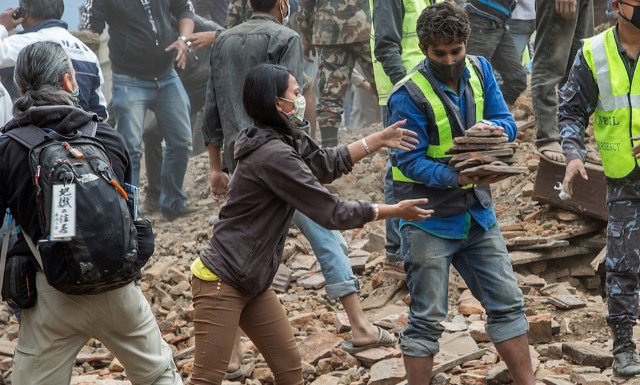How technology helps Nepal relief efforts

The earthquake that struck Nepal two weeks ago has claimed the lives of more than 8,000 people, while a second has caused the death toll to rise further still. Natural disasters such as these shine a light upon the fragility of human life when faced with powerful tectonic forces.
Despite advances in earthquake prediction, it is still nearly impossible to say exactly where and when an earthquake will strike. Experts have been predicting that a huge quake would hit Nepal eventually, but when it did there was still little that anyone could do.
This feeling of helplessness, however, cannot be continued into the relief effort and technology is helping to empower rescue teams and aid workers in new and more effective ways.
Rescuers in the Himalayan country have been utilizing NASA technology to help the rescue effort. A radar detector, known as Finder (Finding Individuals for Disaster and Emergency Response), is a suitcase sized device that identifies heartbeats. So far, the technology has helped rescue four earthquake victims who otherwise may not have been found underneath the vast quantity of rubble, mud and debris.
This is the first use of Finder in a real-life disaster situation, but the device has proved extremely useful. Listening for the faint signs of life in a situation like that facing Nepal is extremely difficult due to the noise of relief work and the fact that potential survivors could be unconscious. Finder works around this problem by using radar signals to detect minute movements, such as those caused by breathing.
Natural disasters can split communities apart and separate families, often due to damage to communication networks. Technology companies like instant messaging and VoIP firm Viber are also attempting to help the Nepalese people by announcing that all internal calls within the country will be free-of-charge in the wake of the crisis. Microsoft has also implemented a similar scheme for all domestic Skype calls, while mobile network carriers such as AT&T are also waiving fees for calls and texts.
Other technology giants like Facebook and Google have also lent their support to the earthquake victims. The former’s Safety Check feature and the latter’s Person Finder both hope to use crowdsourcing to help locate missing persons. Both services enable people to request information for a loved one and make it possible for individuals to reassure family members that they are safe.
Similarly, Apple has enabled a one-click donation feature to enable iTunes users to donate money to the American Red Cross as easily as possible. The Cupertino-based firm instigated a similar proposal following the 2011 Japan tsunami and other natural disasters in order to make donations more efficient.
Drones have also shown themselves to be a valuable response tool, providing a bird’s eye view of the disaster zone. The earthquake and the continuing aftershocks can make it difficult to reach areas by foot or car, meaning that drones can provide the safest way of assessing damage and locating survivors. The airborne devices have already helped aid delivery in the area by providing information to charity workers that would otherwise be unavailable.
Although we may not have developed a way of predicting exactly when and where an earthquake will strike, technology is still a valuable tool for disaster response teams working in the aftermath of any natural disaster.
Further advances in seismic monitoring technology in combination with innovations to building construction may one day see the damage caused by earthquakes vastly reduced or even eliminated. Until then, the work being done by technology companies to support aid workers across the globe is not just important, but truly life-saving.
Published under license from ITProPortal.com, a Net Communities Ltd Publication. All rights reserved.